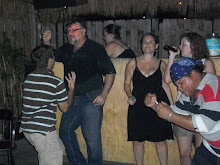1. What claims do John the Baptist and John the writer make about Christ inverses 15-18?
Note: The writer of this Gospel never names himself. In chapter 1 and elsewhere, "John" refers to John the Baptist, a well-known, radical prophet of Jesus' day.
2. What do you know about the Law Moses gave (1:17)? Why do you think it was given?
Note: The Law wasn't given to be kept but to reveal sin for what it is. Like an x-ray, it doesn't cure anything; it simply reveals the problem. (See 5:45; Romans 3:19-20,7:7; Galatians 2:16, 3:24.)

3. According to John 1:23, how do you understand the primary role of John the Baptist? (See also 3:26-30; Luke 3:4-14,7:29-30.)
-John the Baptist announced the imminent arrival of the Messiah, calling on men to make their way straight—a way that had been twisted by centuries of self-will and religious traditions. If they didn't do this, they wouldn't recognize the Messiah.
Right: Painting of John the Baptist by Titian in 1520.
4. How could the people of Israel straighten their way of living?
Note: Repentance means a change in mentality, a desire to leave your current way of life in order to enter into a relationship with Christ. Notice that the change came first, then the baptism. John's baptism was the sign that the individual had indeed repented (Luke 3:4-14).
5. Why do you think Jesus is called the "Lamb of God"? (See Isaiah 53:4-7, Hebrews 10:1-14.)
Note: The Old Testament sacrifices are illustrations of the need for the single, sufficient sacrifice of Christ.
6. What do you think are the implications of John the Baptist's declaration in John 1:33 that Jesus will baptize with the Holy Spirit?Note: Being a Christian is not merely following a certain philosophy, or becoming a part of a religious system, it is a relationship between two persons: Jesus Christ and the individual (1:12, 3:5-8, 4:23-24). This baptism doesn't involve water.
Read John 1:34-51.

7. This section teaches the story of how five people first encountered Christ. Each one came by a different means. Who are the five, and what was it that prompted each to believe in Christ?
Left: An Eastern Orthodox painting of John the Baptist from 1620.







No comments:
Post a Comment